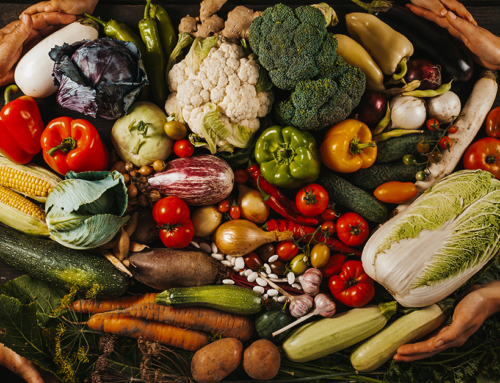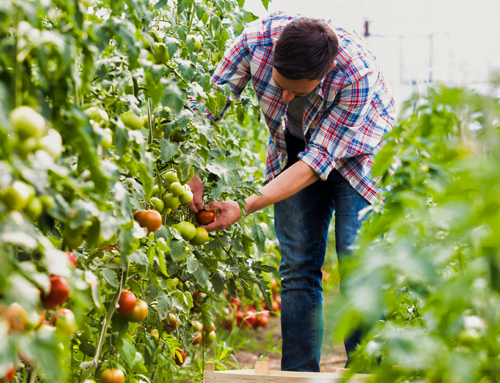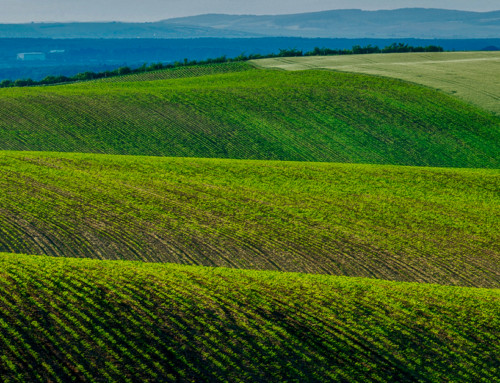It is a known fact that the soil is one of the most diverse habitats, holding a very important system of biotic and abiotic elements. We can find all sorts of life in soil, such as bacteria, fungi, protozoa, and other animals. This variety of living organisms is what we call soil biodiversity. They help maintain and increase the productivity of agroecosystems. However, soil is also a limited and finite resource, which requires attention and care, especially considering that this resource is essential for life on Earth.
Soil biodiversity became a more popular topic in the last decade when discussions brought to light the necessity to ensure these organisms’ ability to perform their ecosystem functions even in situations of stress. The higher level of biodiversity species and functional groups the better soil’s response to problematic disturbance, in other words, soils become more resilient.
Agriculture is one of the oldest activities in human history, and it has evolved over the years, but there are still a lot of discussions about its future. Numerous studies have already shown how unsustainable conventional agriculture is in terms of environmental impact and providing food security. The good news is that other studies show that with sustainable management practices, it is possible to increase agricultural yield while preserving the environment.
Our thoughts about this matter are pretty simple: we believe that sustainable agriculture, using natural and chloride-free fertilizers, caring for soil health, and enhancing biodiversity can increase the resilience of agroecosystems and, thus, improve agricultural productivity.
The value of soil biodiversity for agriculture
The impact of conventional agriculture on soil health and organisms are undeniable, however, with sustainable land management, it’s possible for agricultural systems and biodiversity to coexist in a peaceful and symbiotic way. The link between agriculture and soil biodiversity becomes even more clear considering that soil organisms are allies to successful plant development, given its role in improving soil health, structure, and composition. A biodiverse soil is more fertile and will, most likely, produce better crops, also increasing farmers’ profits.
For that reason, the conservation of soil and its biodiversity, is a key factor for the economic success of the agricultural sector, especially considering the current climate crisis, which aggravates climate hazards such as droughts or heavy rainfall. Conservation of soils is a driving factor for economic success, once we understand that soil is a finite resource that we must protect in order to use it.
Farmers’ livelihoods depend on productivity, that is why so many farmers turn to synthetic fertilizers, pesticides, and monocultures, as a way to increase their income. However, some farmers are also worried about their impact on natural resources rather than just focusing on yield and profitability. To increase their profits, sustainable farmers have a different mindset, which leads them to adopt practices that allow them to work alongside nature, using ecosystem services to improve their crops, while promoting ecosystem health. These practices include cover crops, crop rotations, reduced tillage, and livestock integration.
From these practices, soil biodiversity is conserved, and costs are lowered by reducing dependence on inputs like water, fertilizers, herbicides, pesticides, and livestock feed. Therefore, it is important that farmers are alert to changes in the land and climate, and find climate-smart solutions, in order to be able to not only mitigate and/or adapt to new climate realities, but also reduce their production costs.
Another important strategy is maintaining a sustainable level of soil organic carbon within soil, to conserve its biodiversity and fertility, and there are simple and strategic ways to ensure the availability of this important element. For that, is fundamental to carefully manage the land in a sustainable way and move away from synthetic and chloride-containing fertilizers.
The role of soil biodiversity in food production
The importance of soil biodiversity to agriculture goes way beyond its economic benefits. Soil biodiversity can also be used as a parameter to indicate the quality of the food harvested. Therefore, we can understand agriculture, biodiversity, and food security as a web of results and interlinked elements directly related to soil health.
Conventional soil management practices cause soil degradation and biodiversity loss. In fact, over 30% of the world’s soil is already degraded. Consequently, this can cause a decrease in agricultural productivity, leading to economic loss and the aggravation of food insecurity worldwide. The greed to produce as much as possible failed to seek the protection of soil and its living organisms. In the long-term, this mindset can lead to the lack of available arable lands and poor-quality food.
Worldwide, food security is an important matter, and a subject discussed in many UN meetings since hunger is still one of the biggest problems in many nations and a priority in many humanitarians’ global agendas. The term food security embraces:
- Food availability;
- Food access;
- Utilization (regarding the use of food through an adequate diet and sanitation);
- Stability (regarding the certainty of access to food).
Therefore, food security is more than access to food, but access to good food. This is a very interesting and important point to debate, since the current common human diet has less diversity of vegetables, and the ones eating are normally poor in nutrients. The organisms present in the soil work on increasing the level of nutrients, which will be absorbed by plants resulting in more nutritious food that will be taken to the population. That way, the human body will be stronger to perform in its best. This is only possible when there is healthy and biodiverse soil to grow crops.
At last, it became imperative to create a link between agriculture production and soil protection, since together they are able to increase incomes, and benefit both small and large-scale farmers. To achieve this goal, changes are required not just on production methods, but also on policies, all with the support of extensive research and scientific knowledge.
Below, there are some other articles that you might be interested in:
- How do soil organisms drive soil water availability?
- Nature-based solutions: The key to sustainable agriculture
- Biochar: understanding its use and benefits





Leave A Comment